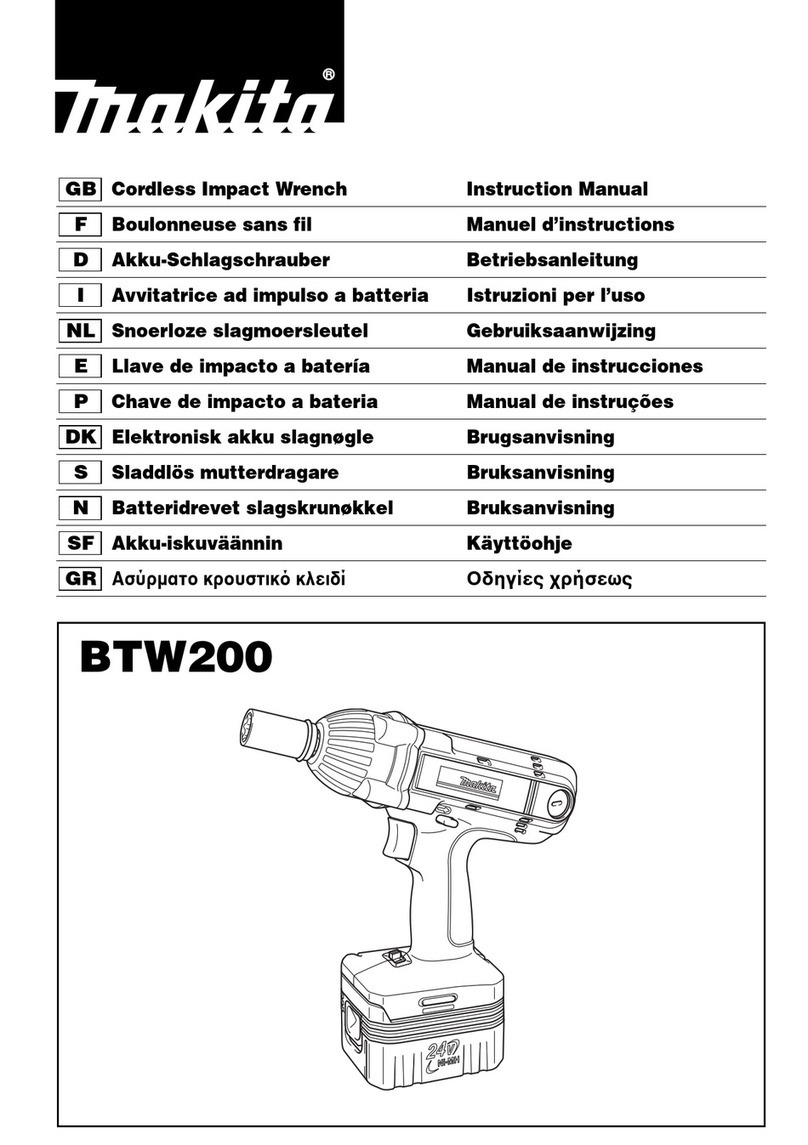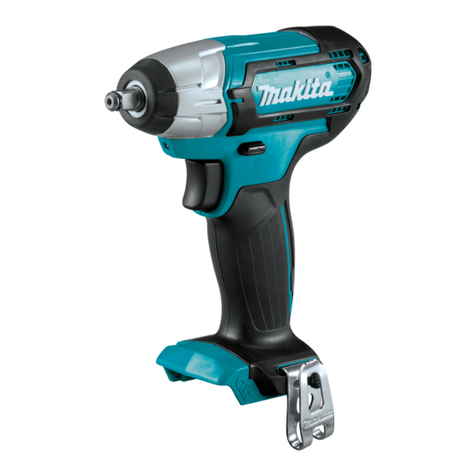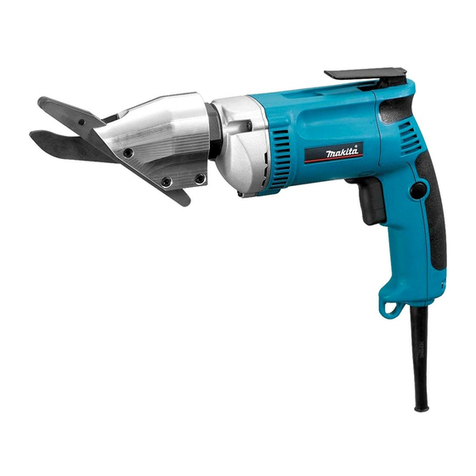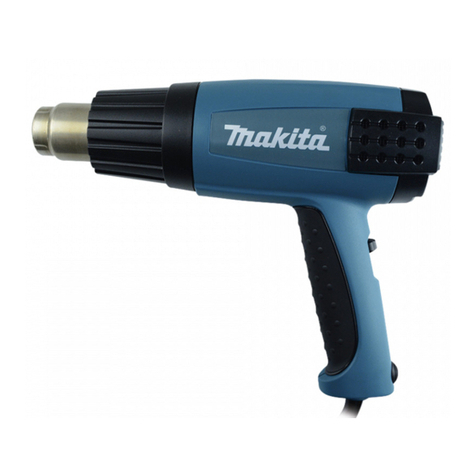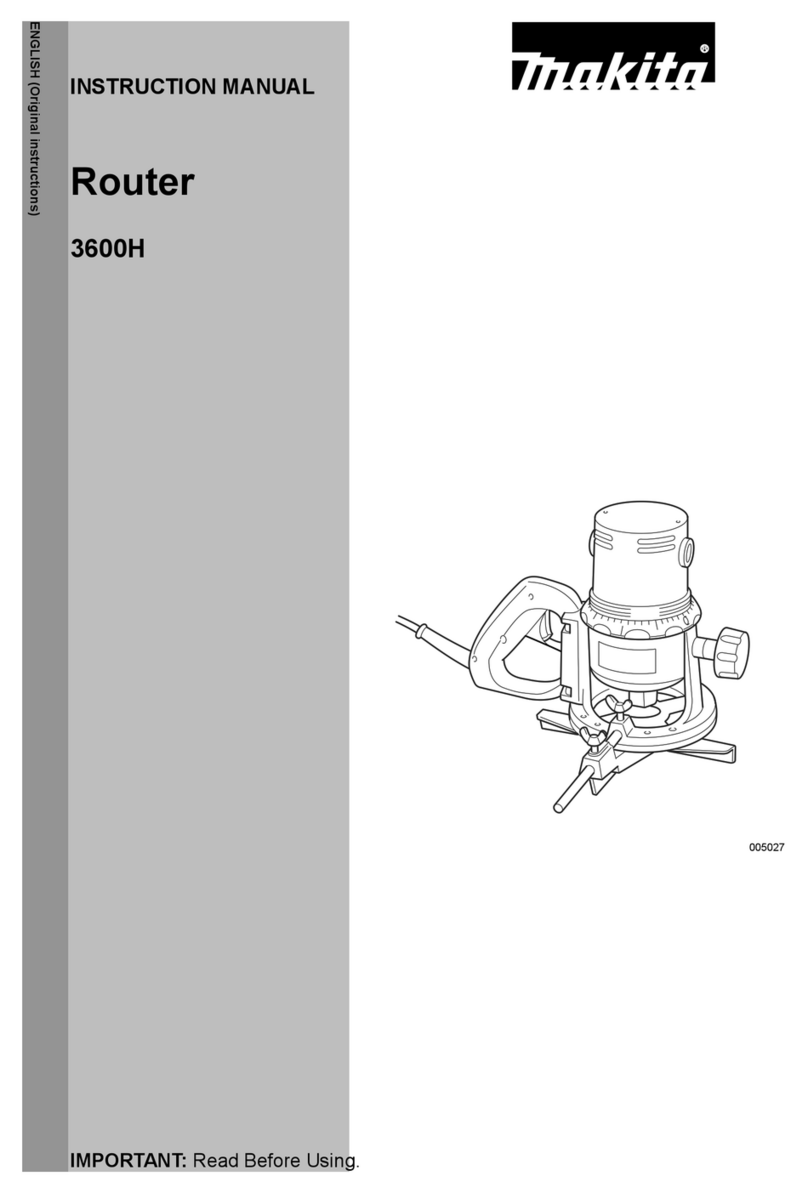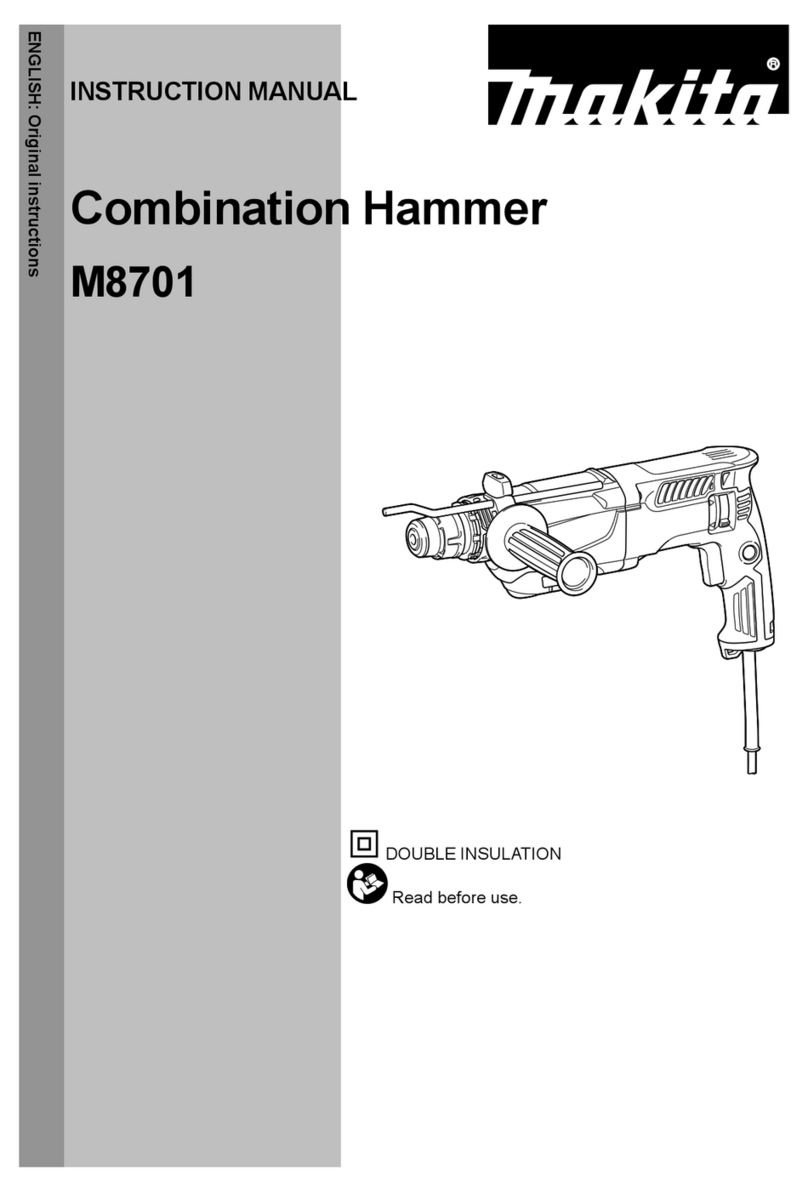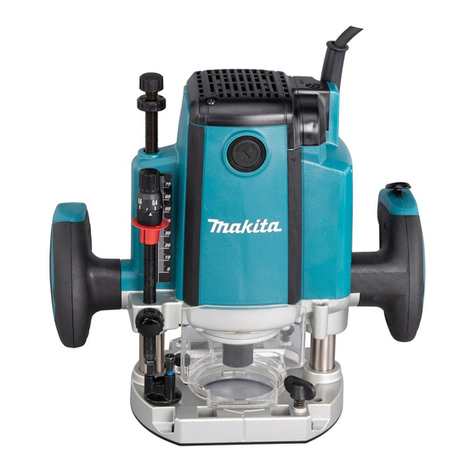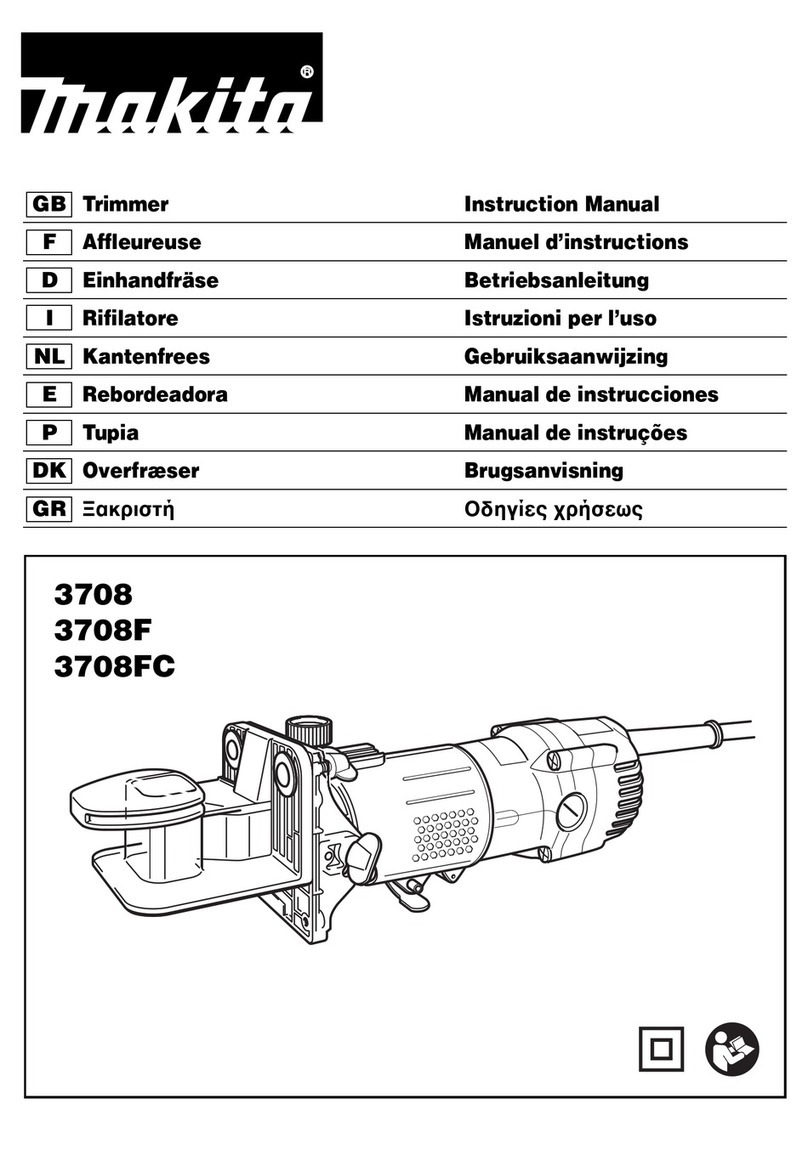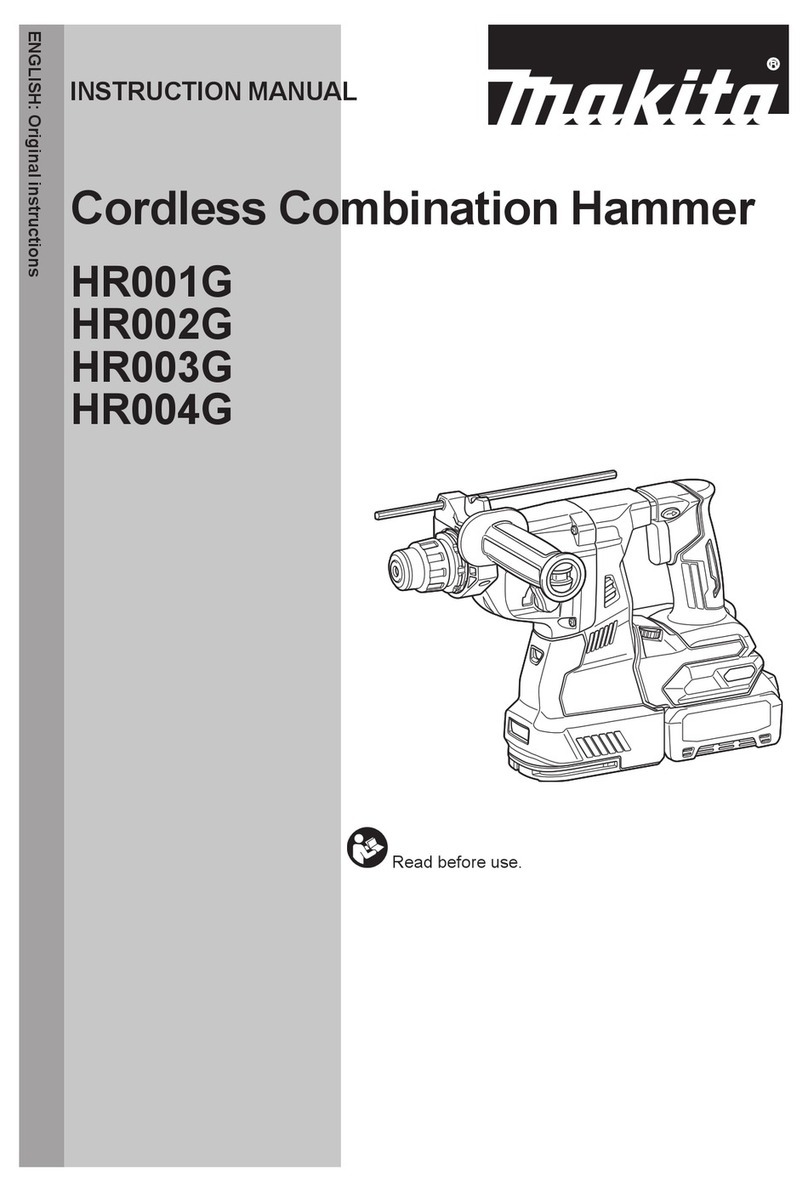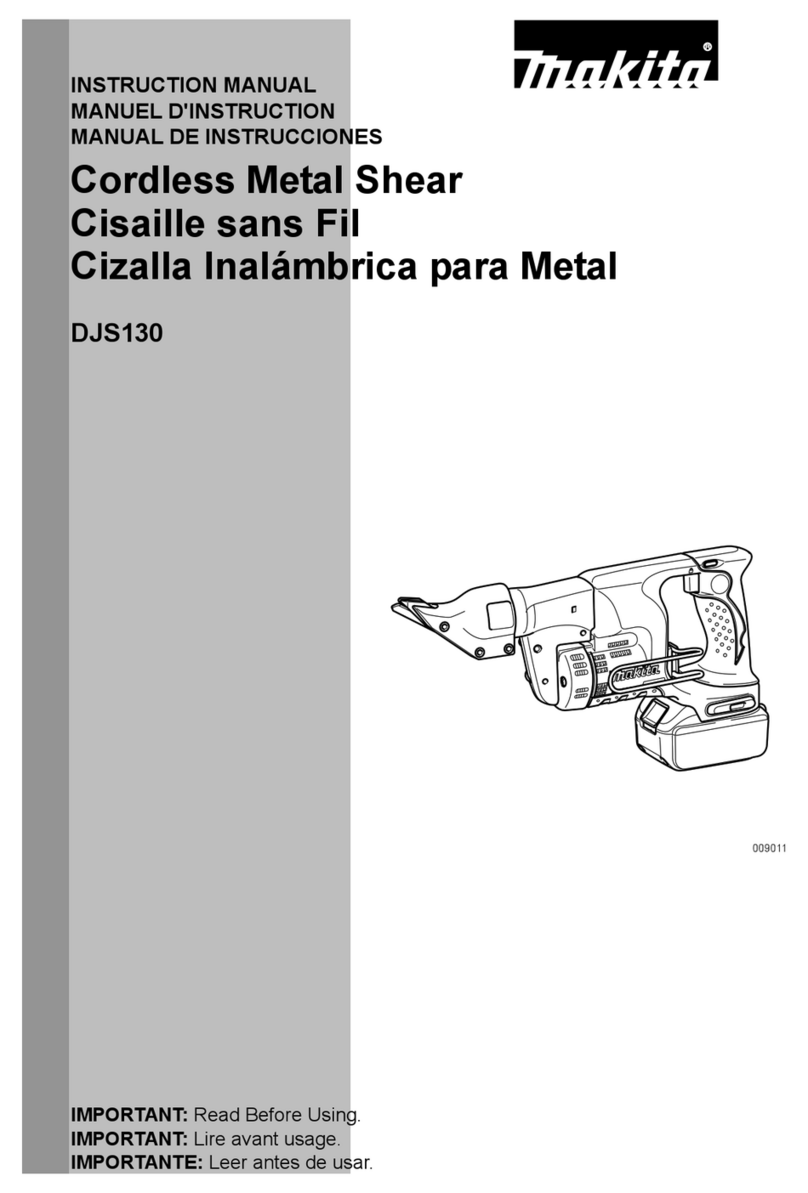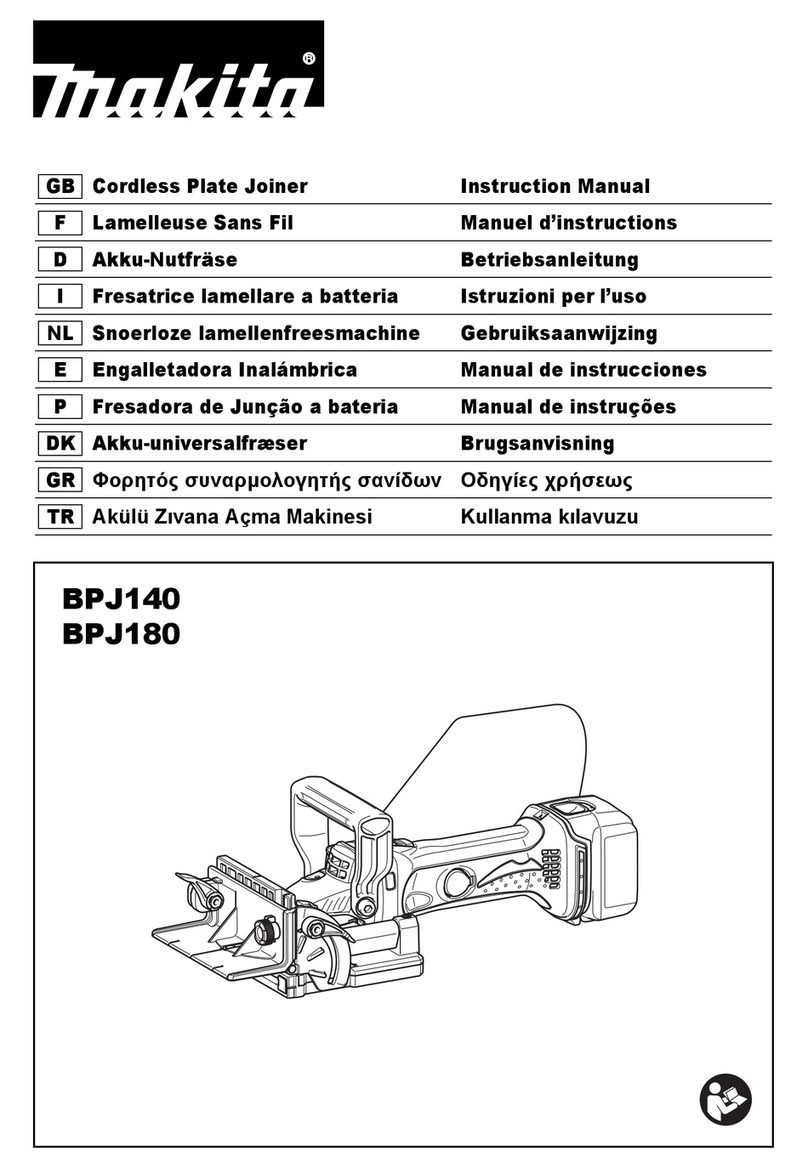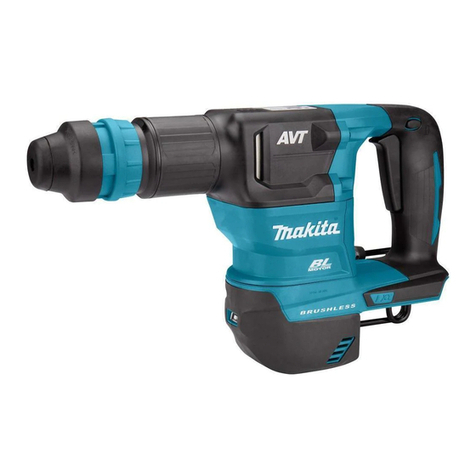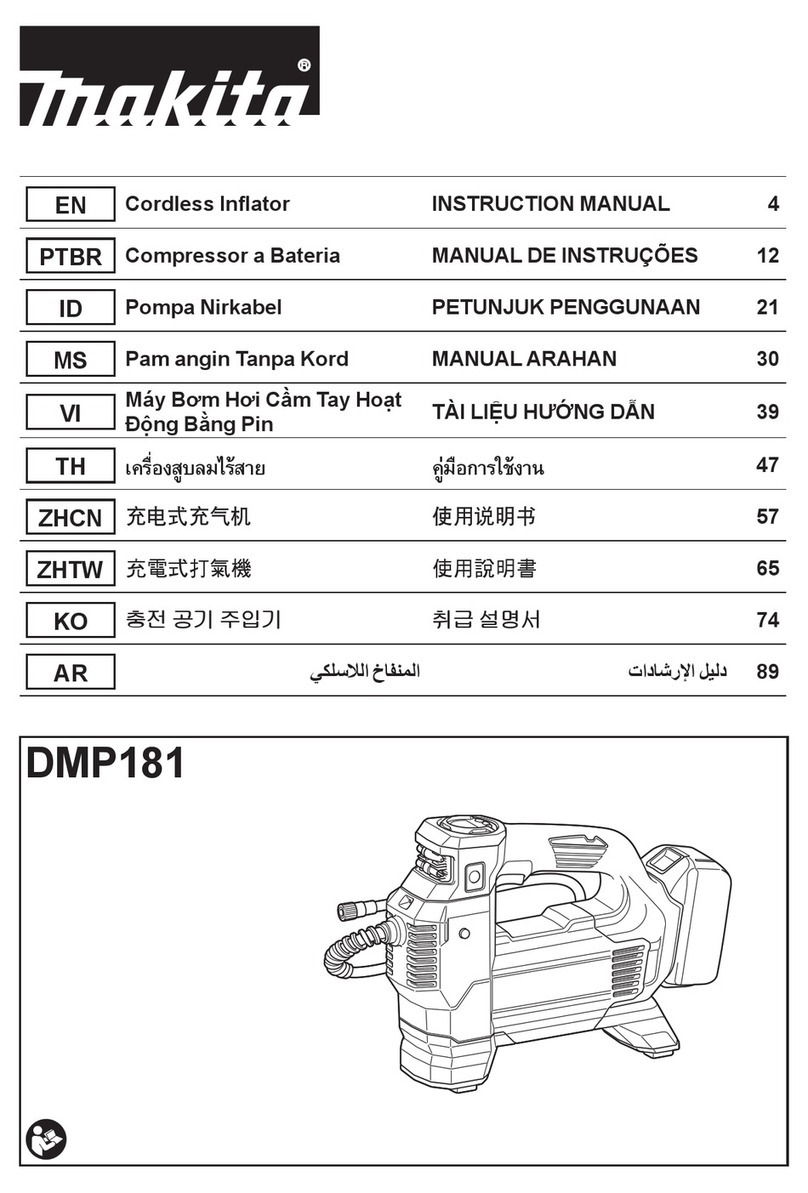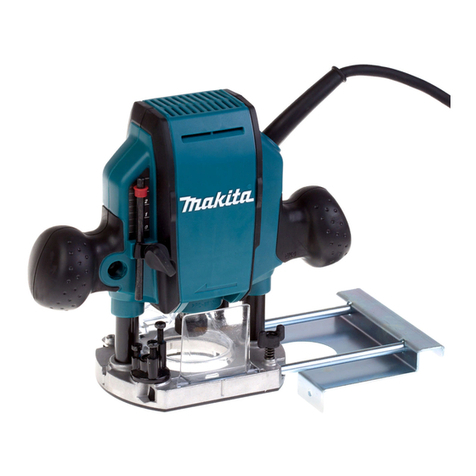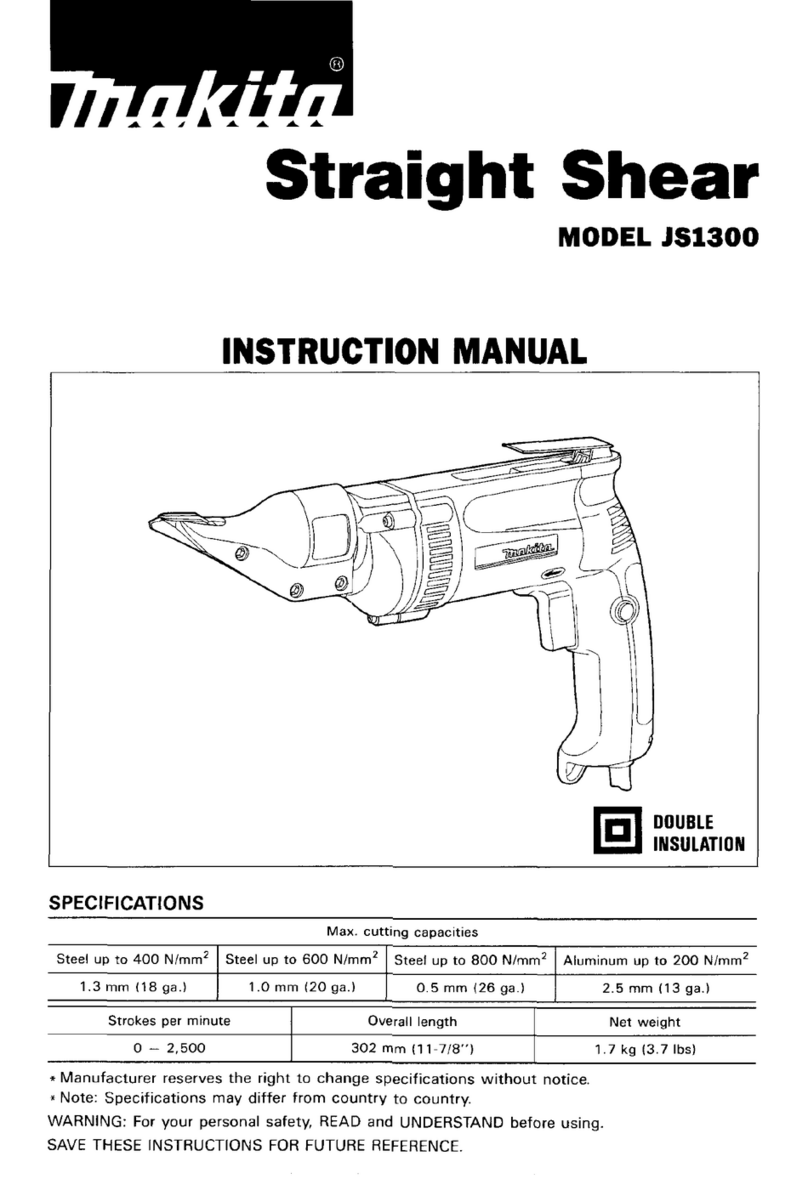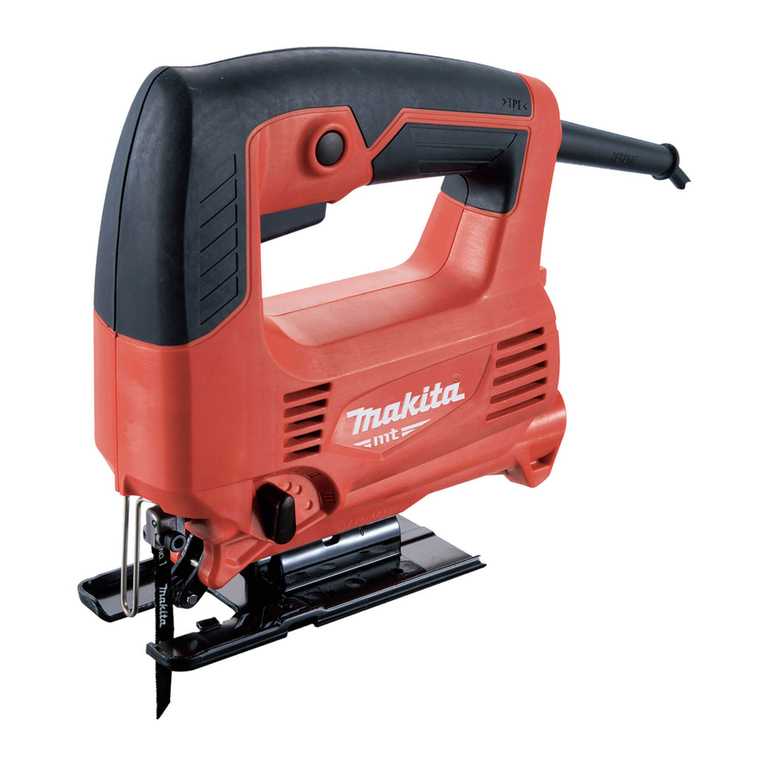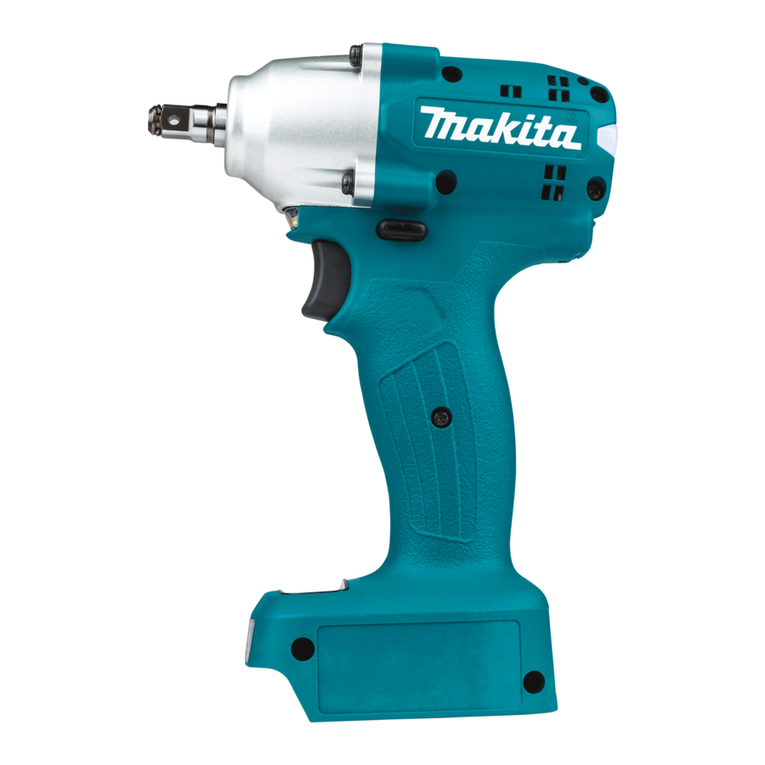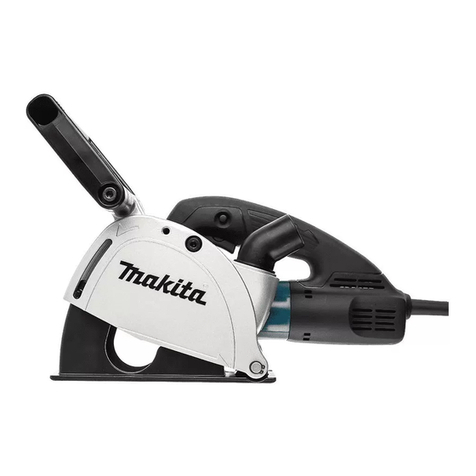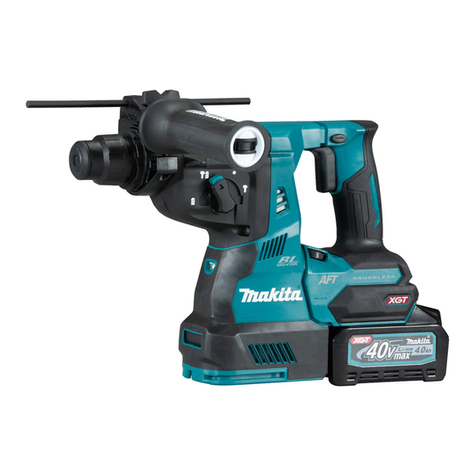
5
19. Stay alert
Watch what you are doing. Use common sense.
Do not operate tool when you are tired.
20. Check damaged parts
Before further use of the tool, a guard or other
part that is damaged should be carefully checked
to determine that it will operate properly and per-
form its intended function. Check for alignment of
moving parts, binding of moving parts, breakage
of parts, mounting, and any other conditions that
may affect its operation. A guard or other part
that is damaged should be properly repaired or
replaced by an authorized service center unless
otherwise indicated elsewhere in this instruction
manual. Have defective switches replaced by
and authorized service center. Do not use tool if
switch does not turn it on and off.
21. Warning
The use of any other accessory or attachment
other than recommended in this operating
instruction or the catalog may present a risk of
personal injury.
22. Have your tool repaired by an expert
This electric appliance is in accordance with the
relevant safety rules. Repairing of electric appli-
ances may be carried out only by experts other-
wise it may cause considerable danger for the
user.
ADDITIONAL SAFETY RULES
1. Wear a hard hat (safety helmet), safety
glasses and/or face shield. It is also highly
recommended that you wear a dust mask, ear
protectors and thickly padded gloves.
2. Be sure the bit is secured in place before
operation.
3. Under normal operation, the tool is designed
to produce vibration. The screws can come
loose easily, causing a breakdown or acci-
dent. Check tightness of screws carefully
before operation.
4. In cold weather or when the tool has not been
used for a long time, let the tool warm up for
several minutes by operating it under no
load. This will loosen up the lubrication.
Without proper warm-up, hammering opera-
tion is difficult.
5. Always be sure you have a firm footing.
Be sure no one is below when using the tool
in high locations.
6. Hold the tool firmly with both hands.
7. Keep hands away from moving parts.
8. Do not leave the tool running. Operate the
tool only when hand-held.
9. Do not point the tool at any one in the area
when operating. The bit could fly out and
injure someone seriously.
10. When chipping into walls, floors or wherever
“live” electrical wires may be encountered,
DO NOT TOUCH ANY METAL PARTS OF THE
TOOL!
Hold the tool by the insulated grasping sur-
faces to prevent electric shock if you chip
into a “live” wire.
11. Do not touch the bit or parts close to the bit
immediately after operation; they may be
extremely hot and could burn your skin.
SAVE THESE INSTRUCTIONS.
OPERATING INSTRUCTIONS
Installing or removing the bit (Fig. 1)
Important:
Always be sure that the tool is switched off and
unplugged before installing or removing the bit.
With the notched portion on the shank of the bit fac-
ing toward the tool retainer, insert the bit into the tool
holder as far as it will go. Then pull out and turn the
tool retainer 180° to secure the bit. After installing,
always make sure that the bit is securely held in
place by trying to pull it out.
When installing the scaling chisel, clay spade or ram-
mer, remove the dust cover from the tool.
Side handle (auxiliary handle) (Fig. 2)
The side handle can be either freely swiveled or
secured at one position for use during tool operation.
Just loosen the nut to swivel the handle freely. To
secure the handle at a fixed position, first loosen the
nut and swing the handle to the desired position for
use. Then tighten the nut firmly. If the set bolt turns
together with the nut when you secure the nut, see
that the projecting portion of the side handle fits into
the notch on the head of the set bolt.
Switch action (Fig. 3)
CAUTION:
Before plugging in the tool, always check to see that
the switch trigger actuates properly and returns to the
“OFF” position when released.
To start the tool, simply pull the trigger. Release the
trigger to stop. For continuous operation, pull the trig-
ger and then slide down the lock button. To stop the
tool from the locked position, pull the trigger fully,
then release it.
Chipping / Scaling / Demolition
Hold the tool firmly with both hands. Turn the tool on
and apply slight pressure on the tool so that the tool
will not bounce around, uncontrolled. Pressing very
hard on the tool will not increase the efficiency.
